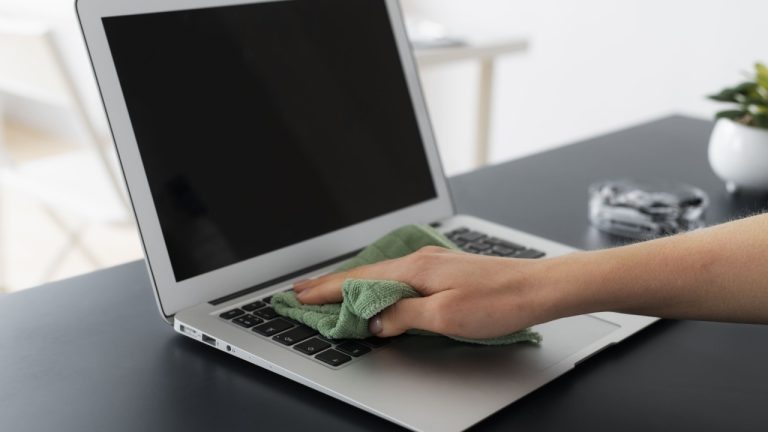Keeping your computer clean is essential for maintaining optimal performance and prolonging its lifespan. Dust and debris can accumulate inside your computer, causing it to overheat and slow down. Regular cleaning can prevent these issues and ensure your machine runs smoothly. Here’s a step-by-step guide to DIY computer cleaning that will help you improve performance without risks.
1. Gather the Necessary Tools
Before you start, make sure you have the following tools and materials:
- A can of compressed air
- A microfiber cloth
- Isopropyl alcohol (at least 90% concentration)
- Cotton swabs
- A small, soft brush
- A screwdriver (if you need to open the case)
- Anti-static wrist strap (optional but recommended)
2. Prepare Your Workspace
Set up a clean, well-lit workspace. Make sure you have enough room to lay out your computer and components if needed. Ideally, work on a non-carpeted surface to minimize static electricity.
3. Power Down and Unplug
Turn off your computer and unplug it from the power source. Disconnect all peripherals such as the keyboard, mouse, monitor, and any other external devices. This will prevent any electrical accidents and make it easier to access the internal components.
4. Open the Case
Using the screwdriver, carefully remove the screws holding the case cover in place. Depending on your computer model, you may need to remove the side or back panel. Once the screws are out, gently slide or lift the panel off.
5. Ground Yourself
If you have an anti-static wrist strap, put it on and attach it to a grounded metal surface. This will prevent static electricity from damaging sensitive components. If you don’t have a wrist strap, periodically touch a metal part of the case to discharge any static buildup.
6. Remove Dust with Compressed Air
Hold the can of compressed air upright and use short bursts to blow dust off the internal components. Pay special attention to the following areas:
- CPU cooler and fan: Dust can clog the cooling fins and reduce airflow.
- Graphics card: Blow air through the cooling fan and heatsink.
- Power supply: Use the compressed air to clean the intake and exhaust vents.
- Case fans and vents: Dust can block airflow and cause overheating.
Be careful not to let the fans spin while blowing air on them, as this can damage the bearings. Hold the fan blades in place with a cotton swab while you clean.
7. Clean the Components
Using a soft brush, gently remove any remaining dust from the components. Avoid using too much force, as this can damage delicate parts. For hard-to-reach areas, use cotton swabs dipped in isopropyl alcohol.
- Motherboard: Brush away dust from the board and connectors.
- RAM sticks: If your RAM sticks are removable, take them out and clean the contacts with a cotton swab and alcohol.
- Storage drives: Wipe down the surfaces with a microfiber cloth.
8. Clean the Exterior
Use the microfiber cloth to wipe down the exterior of your computer case, monitor, keyboard, and mouse. For stubborn grime, use a cloth slightly dampened with isopropyl alcohol.
9. Reassemble and Reconnect
Once everything is clean and dry, carefully reassemble your computer. Replace the case panel and secure it with the screws. Reconnect all peripherals and plug your computer back into the power source.
10. Power On and Test
Turn on your computer and ensure it’s running smoothly. Listen for any unusual noises and monitor the temperature to ensure the cleaning is successful.
Additional Tips
- Regular Maintenance: Clean your computer every 3-6 months to prevent dust buildup.
- Proper Ventilation: Ensure your computer is in a well-ventilated area to reduce dust accumulation.
- Avoid Food and Drinks: Keep food and drinks away from your computer to prevent spills and crumbs from getting inside.
Conclusion
Regular cleaning is a simple yet effective way to maintain your computer’s performance and longevity. By following this step-by-step guide, you can safely clean your computer and prevent common issues caused by dust and debris. Remember, a clean computer is a happy computer, and taking the time to perform regular maintenance can save you from costly computer repairs and downtime.


